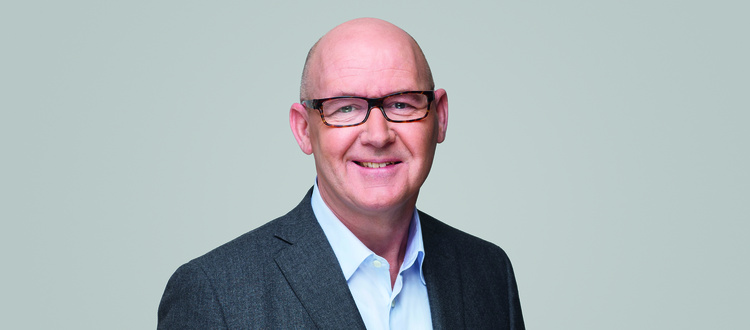Welcome, Mr Gerling. For well-known reasons, many Germans are currently reluctant to spend. What does this mean for retailers' advertising behaviour? Is the usual mechanism taking effect - whoever advertises more makes more sales?
Consumers currently have the clear expectation that they will soon lack disposable income. The drivers are, of course, gas and energy costs, which are doubling, or petrol prices, which are still at a high level. Consumers are worried that they will no longer be able to pay their bills, perhaps even their property financing. This is already having an impact on sales. The food retail sector is also feeling the effects with a drop in sales of up to 10%, despite the fact that sales have developed so favourably in recent years. Organic ranges, regional goods and specialities are currently losing relevance, while private labels are gaining. Price dominates the shopping basket.
For the retailer, this means that the price as an advertising message is being brought back into focus. This is happening primarily via print - but channels such as TV advertising, which are otherwise more predestined for image messages, are also being used to advertise offers. There are no savings to be made on advertising costs - and that's a good thing, because right now the advertising pressure needs to be maintained.
Speaking of print. Our study "Die Bedeutung des Proepekts 2022" with IFH MEDIA ANALYTICS shows that the leaflet remains popular with consumers and that convergence is now in demand. Recent developments at OBI or parts of REWE run contrary to this. How do you assess the decision?
We have long observed that digital advertising measures are on the rise. However, it is important not to see the issue in black and white. It's not a question of print or digital, it should rather be a question of coexistence. In our experience, reducing or even abandoning print measures means long tests and preparation times. And of course there are sectors that are more digitally savvy than others - food retailers in particular are clinging on to leaflets. This made the decision by REWE's supermarket division to do without leaflets in future all the more surprising for us. But here too, the intensive preparatory work is now evident: REWE has implemented the decision in its consistent sustainability strategy, it has established a digital connection to many customers via Payback, newsletter and app and has also prepared the stores ideally, for example in terms of offer labelling. However, there is currently no sign of a trend towards doing away with leaflets at other food retailers.
However, it is clear that the cost factor dominates in retail. We are currently talking about a one percentage point cost increase just for energy costs, plus the rise in index-linked rents and the minimum wage from October. Everything is being put to the test and analysed in terms of efficiency. Despite all the savings, at the end of the day the turnover must always be right.
The leaflet is often falsely portrayed as the opposite of sustainable behaviour. Inserts use up to 10x recycled waste paper, which is usually also FSC®- or PEFC™-certified. In your opinion, does the leaflet suffer from the wrong image?
The leaflet certainly suffers from a poor image among parts of the population. I can't judge whether the image is right or wrong. However, there are a number of social groups that are fighting against supplements - recent developments have fuelled the sustainability debate enormously. Cutting down trees is a very vivid image - if you want to show that no trees are cut down for leaflets, it's certainly not easy to get this across. The simple messages stick.
Last but not least, can you already give us an insight into the results of the study "Die Zukunft der Angebotskommunikation", which will be published in September?
With this study on the future of offer communication, we have ventured a far-reaching look into the future and travelled mentally into the year 2035. The questions that arise are big: How and with which media will I still be able to reach young and older people in the future? What effects will new technologies have on promotional advertising in retail? How will the scarcity of raw materials affect leaflets?
Whenever we are dealing with a high degree of uncertainty, as is the case with these questions, it is helpful to not just look at one future, but to look at several futures and think openly about the future. We followed this approach in our study. We have succeeded in developing eight different scenarios for the future of supply communication.
The Club Eco System scenario, which we are looking at here as a representative example, represents the strongest desired scenario for the year 2035. In this future, we find ourselves in an affluent society that is very focussed on individuality and status. Emotional lifestyle partnerships with a strong bond between retailers and specific communities will emerge here. Fressnapf, with its ecosystem for pet lovers, could serve as an example.
The role of retail is to create added value. Through curated offers, content, formats and a high level of convenience for customers, e.g. by automating shopping routines and processes. The aim is to create loyalty and a pull effect into this ecosystem. This goes hand in hand with comprehensive data exchange. On the communication side, we have a wide variety of digital channels, including the growing importance of virtual communities in which the members themselves act as promoters.
Thank you for the informative interview!
The scenario study "Die Zukunft der Angebotskommunikation" will be published in September and can already be pre-ordered now.

